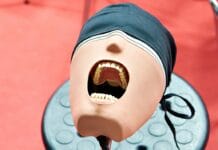Seven years ago, I was still getting the hang of being a new working dental hygienist. At the same time, one of my first articles with Today’s RDH, 3D’s: Do’s, Don’ts of Dental Hygiene Interviewing, was about interviewing for a job because that was what I was experiencing during that time.
A lot has changed, not only for myself but for the field. Since then, I have been educating future dental hygienists, and they are constantly asking about the real world outside of the clinic.
Since the pandemic, there have been many changes to dental hygiene. Practices have changed, some for the better and some not so good. Part of finding a new position requires research and reflection. What do you truly want to look for in your next job?
After that, it’s time for that interview. Just remember, you are interviewing them as much as they are interviewing you ‒ especially now because there is a huge demand for hygienists nationwide.
Hygienists are looking for more than just good pay – they are looking for benefits, a work family, and a future for themselves. In my first article, I mentioned having a few questions ready when potential employers ask, “Do you have any questions for us?” I have a laundry list of questions ready because I want to have all the proper information I need to decide if the office is right for me.
Now, with more professional experience in and out of clinical hygiene, I want to help new grads as well as experienced hygienists who want to make a change. Below are some great things to look for, consider, and ask during your next interview.
1) Don’t lowball yourself
In my first article, I mentioned some of the obvious questions you may want to consider asking. Some of these included what the actual position is, how many days a week you work, hours per day, pay, and benefits, which are pieces of information you should know at the bare minimum. Before your interview, research not only the practice but also the average salaries and benefits in your specific area.
Do not lowball yourself; do not be afraid to advocate for yourself, especially regarding your livelihood. In terms of benefits, are they providing scrub laundering, purchasing scrubs for you, purchasing or reimbursing for continuing education courses, offering paid sick and vacation time, health/dental insurance, or 401k and matching?
2) Determine their standards and expectations
This may involve day-to-day responsibilities. Are you responsible for sterilizing hygiene instruments, or is sterilization a team effort? Do you schedule your own patients? What are the expectations of you beyond providing direct patient care and hygiene treatment?
Essentially, you want to determine what being a team member looks like for that office and where your role lies within the team. Beyond day-to-day responsibilities, this could include taking on the role of OSHA/infection control program coordinator or helping maintain safety data sheets (SDS).
3) It’s a beautiful day in the hygiene neighborhood
What does an average day look like? What does the normal hygiene schedule look like? Can you see an example of the schedule?
How much time do you have with different types of patients: children vs. adults, prophy, perio maintenance, non-surgical periodontal therapy, scaling in the presence of gingival inflammation? If you are a new grad, are they willing to give you some extra time with patients? Whether you are a new grad or just new to the office, you can ask by saying something such as, “Because I am a new grad (or new here and becoming acquitted to this office), would you be willing to give a little more time during this transition?” New grads, you can mention that they are investing in you, and there is a transition from dental hygiene school to professional practice.
In another case, certain patients just need more time than others – they may be more prone to building up calculus or presenting with heavier staining, for example. During the interview, ask if they allow extra time based on the patient’s needs.
4) Who’s there?
How many dentists, hygienists, or assistants are there in the practice? How many hygienists will be working alongside you each day? If there are multiple hygienists, is there a hygiene lead, and what are their expectations for the hygiene team?
5) To clock out or not to clock out?
Another obvious but very important question is about clocking in and out. If a patient no-shows or cancels, are you required to clock out? If they say you have to clock out, don’t walk – run! Red flag!
According to the U.S. Department of Labor Fair Labor Standards Act (FLSA), “If a hygienist has a patient cancel or no-show to an appointment, they are considered to be engaged to wait. This is defined as any time that an employee is waiting for work to do under the normal parameters of the position. An example of this would be a receptionist waiting for a patient to arrive or for the phone to ring. Therefore, they should be considered on duty and paid for the time.”1
We all know there are plenty of tasks we can do if a patient does not show, and we can still be valuable and contribute. Some examples of tasks that can be accomplished are mentioned in the article, 10 Things to Do during Cancelled Dental Hygiene Appointments.
In addition, if a patient cancels or does not show up at the beginning or end of the day, are you asked to leave early or come in late?
A follow-up question is asking about their cancellation and late patient policies. What is the cut-off time for patients to show up for their appointment and still be seen? This may depend on the duration as well as the type of appointment. For example, if a patient is 10 to 15 minutes late for a recall appointment, is it common for them to be rescheduled? Or are they an office where, whenever the patient shows up, you have to complete full treatment in the amount of time you have, regardless?
6) Office tour
What does the office look like? Can you take a tour? During an in-person interview, I want to see the office and where I would possibly be working.
First and foremost, is it clean and professional-looking? Does the flow of the office make sense, or will you be bumping into things or walking across the entire office to get to sterilization? Do you have enough space in the operatory to move the operator chair where needed during patient care? Is all the equipment close by for easy access? Is the sterilization area up to your standards? Are they following proper OSHA and infection control protocols?
Ask yourself if you can see yourself working there. I 100% believe in shadowing the office prior to starting. I will never start working a job without shadowing for at least a day first. During the interview, or if I decide to accept the position, I ask if they would be comfortable with me shadowing for a few hours or a day before the start day to make sure I know where everything is so I am prepared. I take notes on my observations, such as the specifics of their autoclaves and ultrasonic baths.
Shadowing also gives me the opportunity to speak to one of the hygienists in the office and get their perspective. Obviously, putting the dental hygienist on the spot with certain questions would not be right, but you can ask how long they have been working at the practice and what their daily routine looks like. Dental hygienists will tell you how it is, some more than others. You can ask about the patient base and whether they are receptive to recommendations and care.
7) Equipment
During the office tour, take notice of the equipment. Is the equipment all in good condition or falling apart? Are you sharing a radiograph sensor with all the hygienists and/or dental assistants? Importantly, what do the instruments and ultrasonic inserts look like? Are they 10 years old and far past their prime? Will the office be willing to purchase items, products, or equipment you need, or will it be a struggle to so much as get a new curette?
These questions may also be directed to a hygienist in the practice. If not, you can have a conversation on instrument and equipment policies. Bringing up instrument sharpening may spark this type of conversation. Do they send instruments out to be sharpened, or are the hygienists given time to sharpen them in-house? Make observations during the office and operatory tour – you will be able to see the quality and quantity of materials present.
8) Software and radiographs
What software do they use for scheduling and radiographs? What is their average radiograph frequency at that office? When you hear these responses, consider what you are willing to use. If it is software you are unfamiliar with, are they willing to train you? If they don’t have a panoramic machine, for example, are you OK with that?
9) Periodontal protocol
What does their periodontal protocol look like? This involves the breakdown such as the types of patients in the practice, such as prophies, perio maintenance, and active periodontal treatment. What are their patient populations – pedo, teens, adults, geriatrics?
Other questions include:
- What is the referral protocol? Specifically, severe perio patients and suspicious lesions?
- What are their recall or re-evaluation recommendations?
- Are they providing evidence-based treatment and evolving with new research, information, and technologies? For example, are newer treatment modalities such as laser therapy implemented, or are they still irrigating periodontal pockets with chlorhexidine?
- What products do they have in the office? Which products do they like to recommend to patients? For example, dentifrices (prescription and OTC), toothbrushes (manual and electric), mouthwashes, and interdental aids.
10) PPE and safety
What are the safety protocols? If a patient is not feeling well or has an active herpes lesion, are they rescheduled?
What kind of PPE is provided in the office, such as ASTM level 3 masks? Are HVE attachments available that allow you to easily use the high-vac suction during aerosol-generating procedures? You want to not only feel comfortable but safe.
11) I am a dental hygienist – see me scale!
How does the office, office manager, or doctor “see” a dental hygienist? You may be thinking, huh, what does that even mean?
You can get an idea based on some answers from the employer and the feel of the office. You may not need to come out and ask this question directly. Observations during the interview and office tour can also aid in learning this answer. Are you considered just a “teeth cleaner,” or are you a health care provider and oral health prevention specialist?
12) Opportunity to grow?
Is there room to grow at the practice or position? If you are considered part-time at first, is there a chance to become full-time in the future?
This could also involve raises from time to time. Do they have quarterly or annual evaluations or meetings?
13) Office philosophy
What is the office’s philosophy or patient care philosophy? What does the office believe in when it comes to upholding the standard of care and best practices when treating patients? Is the office evolving as new research and technology emerge, or are they stuck in their ways?
After learning about their philosophy, how does the team interact with each other? Do they attend continuing education courses together, have team bonding, social outings, or nothing at all?
In Closing
I wanted to give a shout-out to my dental hygiene students because I know exactly how you are feeling. You may feel anxious and worried not only about boards or getting through dental hygiene school but also about what’s on the other side. Believe me, you will get through it and become an RDH!
I also do not forget the other fellow hygienists reading this article. If you are looking for a change, always know your value and what you want out of your career. Never settle! We are in high demand right now because there is no practice without us.
Before you leave, check out the Today’s RDH self-study CE courses. All courses are peer-reviewed and non-sponsored to focus solely on pure education. Click here now.
Listen to the Today’s RDH Dental Hygiene Podcast Below:
Reference
- Graves DeMarco, A. (2021, August 2). How to Spot a Toxic Dental Office during a Job Interview. Today’s RDH. https://www.todaysrdh.com/how-to-spot-a-toxic-dental-office-during-a-job-interview/












